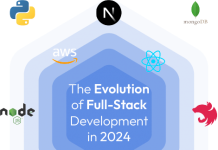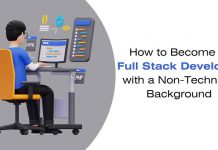In the ever-changing world of web development, staying up-to-date with the latest trends is essential for building cutting-edge applications. Full-stack developers, responsible for both frontend and backend development, play a crucial role in this dynamic landscape. In this blog post, we will explore some of the prominent trends in full-stack development as of 2023, providing you with valuable insights into the direction of this field.
1. Serverless Computing:- Serverless computing has been gaining significant momentum in recent years. This paradigm shift in backend development eliminates the need for developers to manage servers and infrastructure. Instead, they can focus solely on writing code, which is executed in response to events. Services like AWS Lambda, Azure Functions, and Google Cloud Functions have made serverless architecture more accessible and cost-effective. By adopting serverless, full-stack developers can streamline their workflow and reduce operational overhead.
2. Microservices Architecture:- Microservices architecture continues to be a dominant trend in building scalable and maintainable applications. This approach involves breaking down a monolithic application into small, independently deployable services, each with its own specific functionality. Microservices facilitate easier scaling, fault isolation, and the ability to choose the most suitable technology stack for each service. Full-stack developers working in microservices environments need to excel in communication and collaboration, as they often work on various parts of the system.
3. Progressive Web Apps (PWAs):- Progressive Web Apps (PWAs) are a game-changer for delivering web applications that offer a native app-like experience. PWAs use modern web technologies to provide fast loading, offline capabilities, and push notifications. Users can add PWAs to their home screens, making them more accessible. Full-stack developers are embracing PWAs as they enhance user engagement and satisfaction, particularly in industries like e-commerce and content delivery.
4. Containerization and Orchestration:- Containerization technologies like Docker have revolutionized the deployment of applications. Containers encapsulate an application and its dependencies, ensuring consistency across different environments. Kubernetes, an open-source container orchestration platform, has become the go-to solution for managing containerized applications at scale. Full-stack developers proficient in containerization and orchestration can efficiently deploy and manage applications, leading to improved scalability and resource utilization.
5. Single Page Applications (SPAs):- Single Page Applications (SPAs) have become the standard for building responsive and interactive web applications. Frameworks like React, Angular, and Vue.js enable full-stack developers to create SPAs that provide a seamless user experience by loading content dynamically without full page reloads. SPAs are particularly popular in consumer-facing applications and are a must-know for developers in this field.
6. Jamstack Architecture:- Jamstack, which stands for JavaScript, APIs, and Markup, is a modern architecture for building web applications. It decouples the frontend from the backend by relying on APIs for dynamic functionality and serving pre-built static pages. This approach results in faster load times, improved security, and easier scaling. Full-stack developers skilled in Jamstack can leverage tools like Netlify and Vercel to streamline development workflows and deliver high-performance websites.
7. Full-Stack Frameworks:- While there is a growing emphasis on specialized skills, full-stack frameworks like Django, Ruby on Rails, and Laravel still hold a prominent place in the development world. These frameworks provide comprehensive solutions for building web applications, reducing development time and effort. Full-stack developers can leverage these frameworks to rapidly create and deploy feature-rich applications.
Conclusion
In conclusion, the field of full-stack development is continually evolving to meet the demands of modern web applications. As we move further into 2023, the trends mentioned above are expected to shape the industry significantly. Whether you’re a seasoned full-stack developer or aspiring to become one, staying informed about these trends is essential for remaining competitive and delivering high-quality applications in this dynamic field.
Remember that adapting to these trends requires continuous learning and development. Whether it’s mastering serverless computing, diving into microservices, or honing your skills in SPAs and Jamstack, the journey of a full-stack developer is one of perpetual growth and innovation.
By embracing these trends and staying committed to improving your skills, you’ll be well-prepared to navigate the ever-changing landscape of full-stack development and contribute to the creation of cutting-edge web applications.
Master Your Coding Skills with BootSelf AI
If you're looking to enhance your coding abilities and upskill in artificial intelligence, look no further than the BootSelf AI app. This innovative platform provides AI-based coding lessons that are tailored to your individual learning pace.
Available on both iOS and Android, you can download the BootSelf AI app and start mastering coding skills today:













